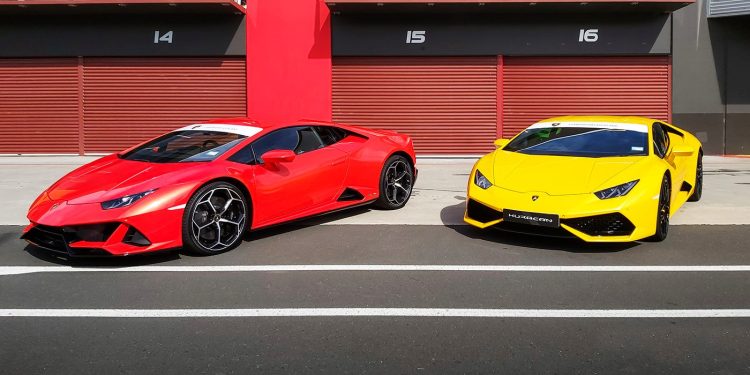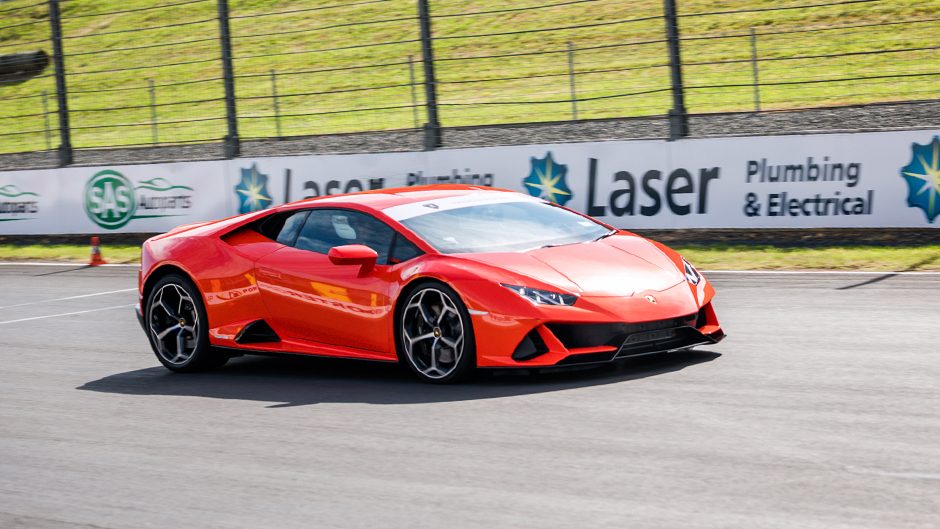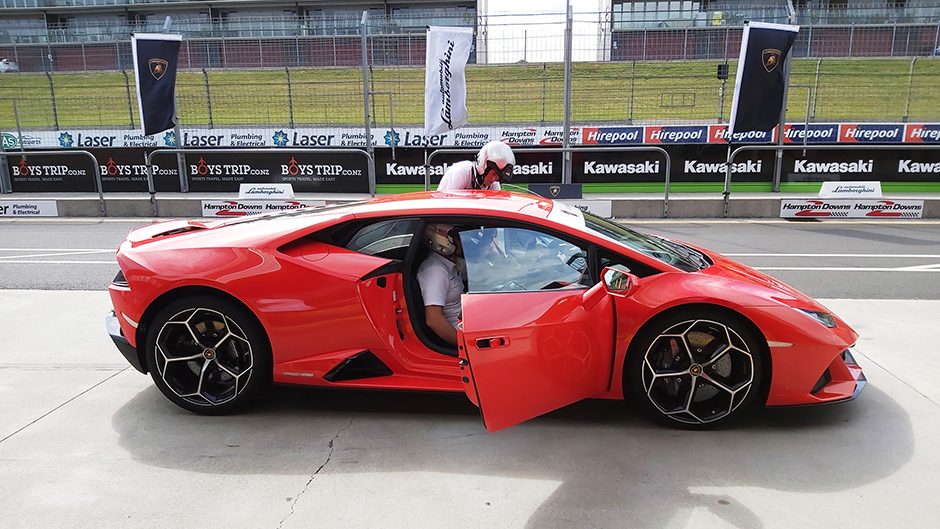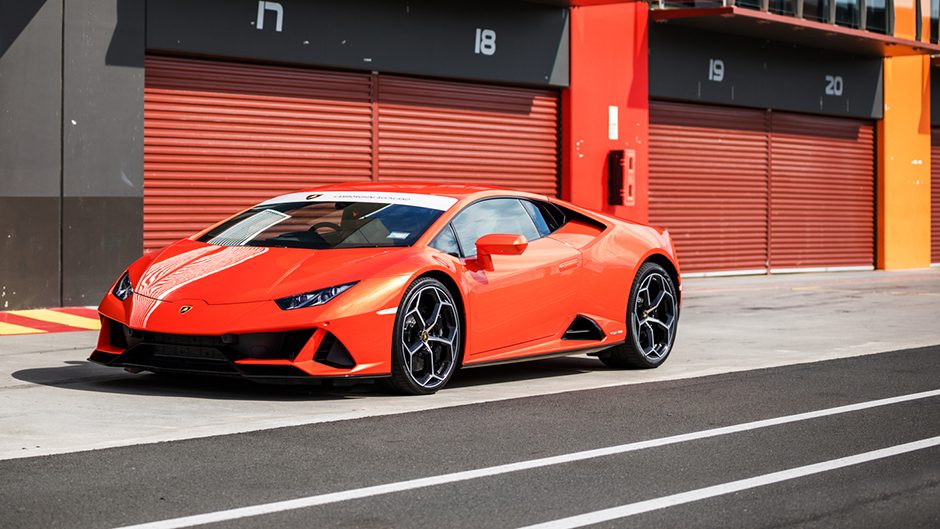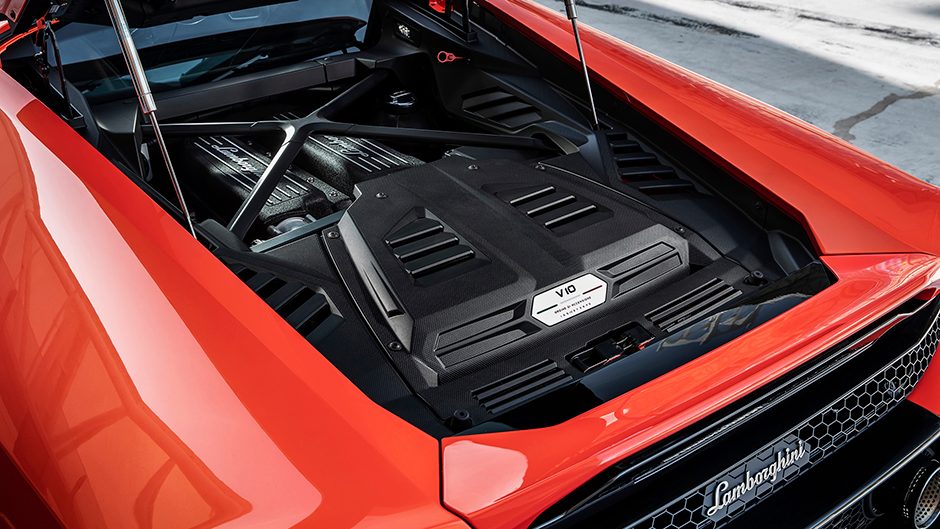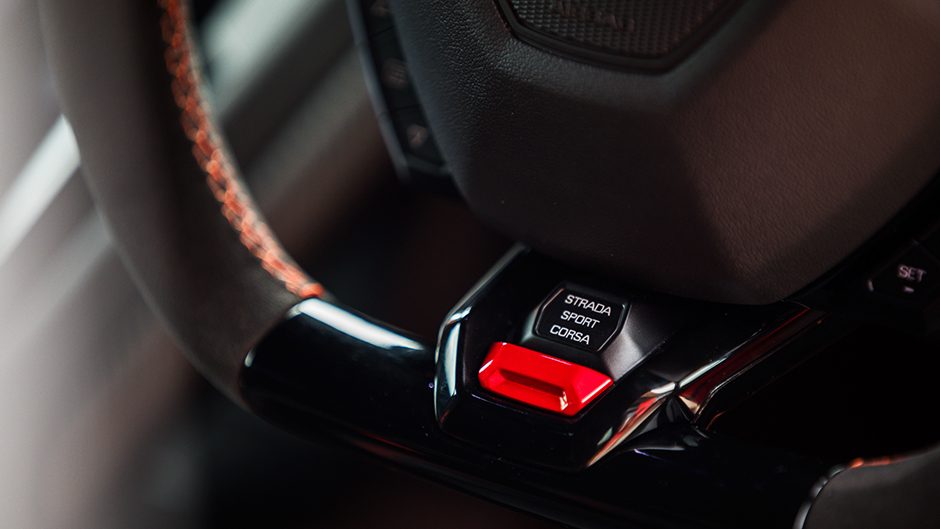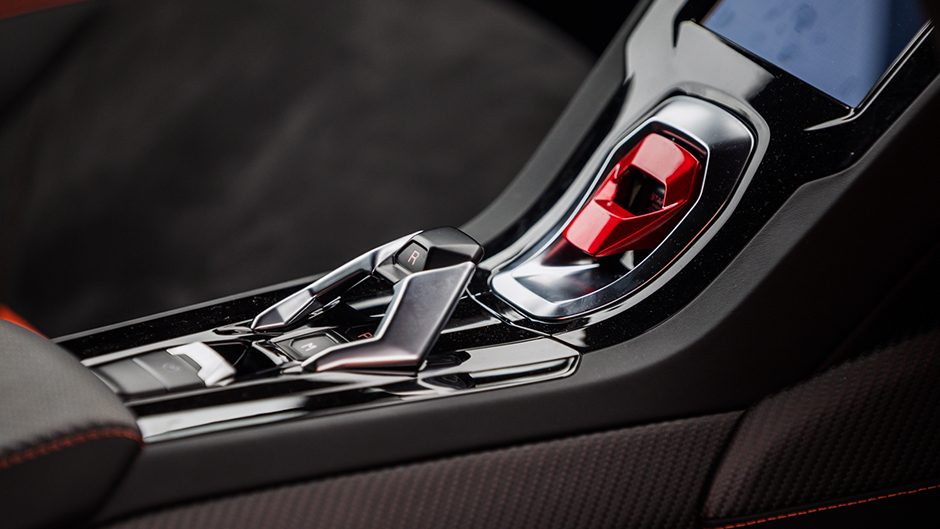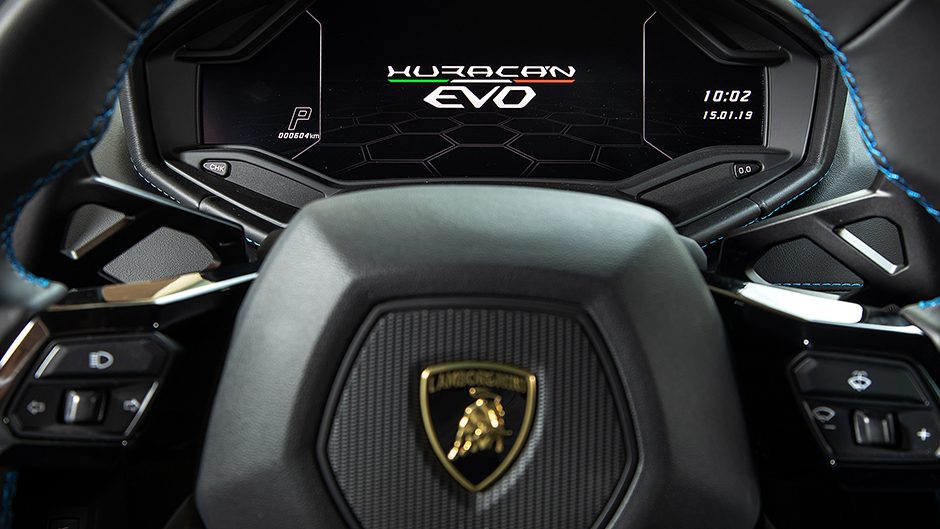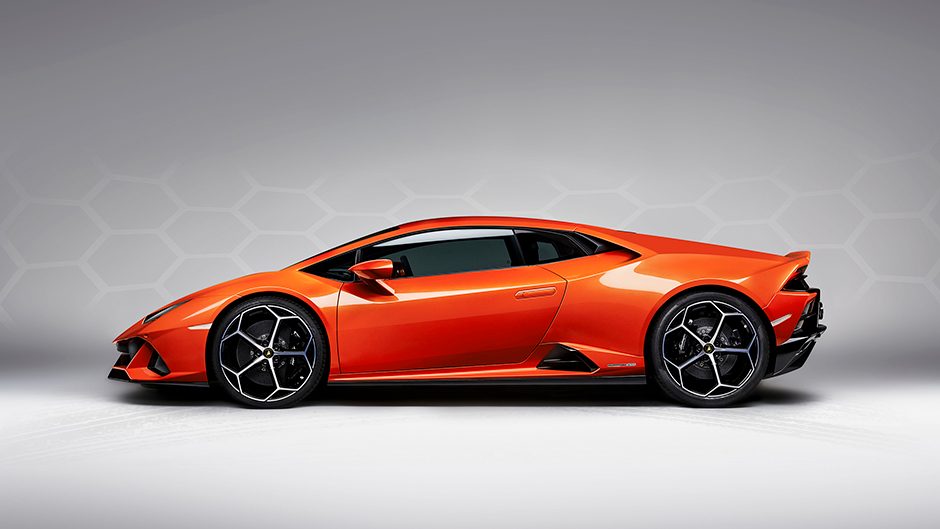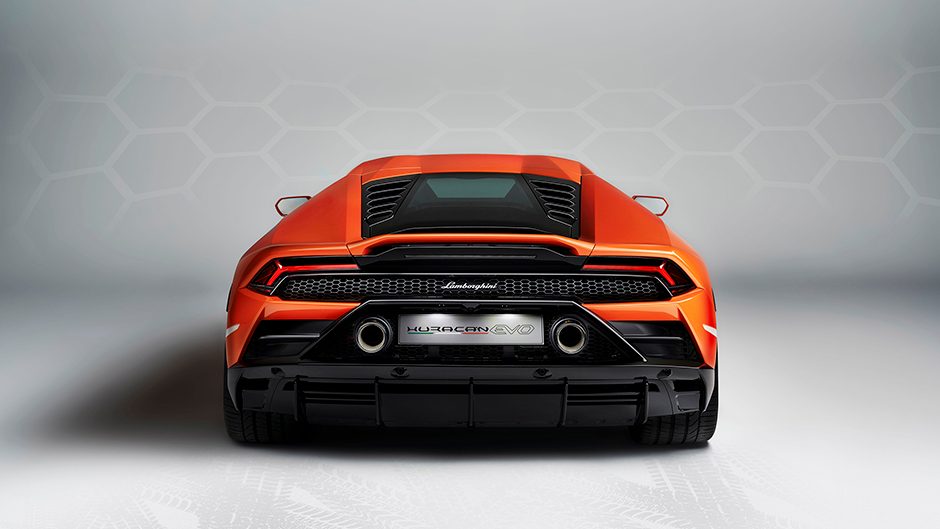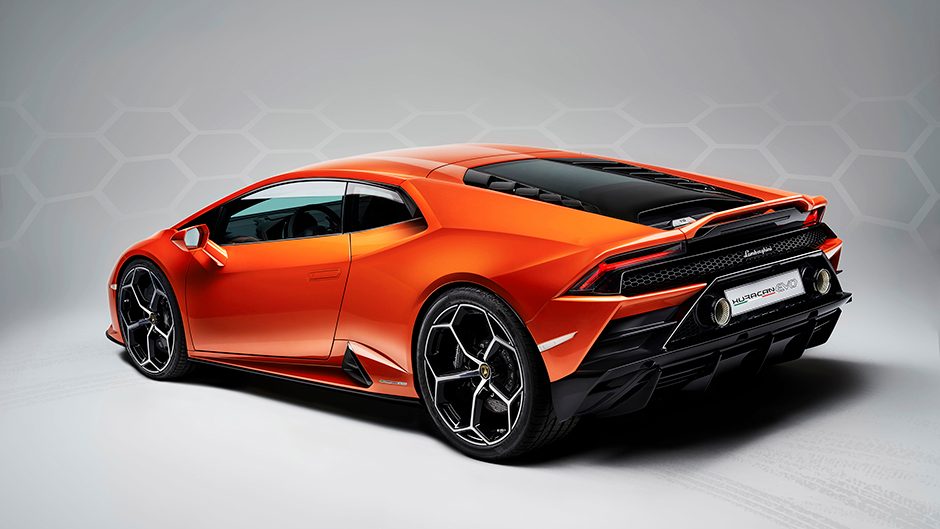2019 Lamborghini Huracán EVO
Words Kyle Cassidy | Photos Suppied/Kyle Cassidy
We get a speedy introduction to the latest blistering bull to emerge from Sant Agata, the Huracan EVO.
Lamborghini’s V10 line has been a raging success for the Bull, lifting production volume, and profits for the Italian since the Gallardo was introduced in 2003. Along the way, Lamborghini has upped the game of its entry model every few years. The Gallardo began life with a 500hp V10 while the last of them was good for 570hp before the 610hp Huracan arrived in 2014. Now it’s the time of the Evo, the mid-cycle version of the Huracan.
In a nutshell, they’ve honed the aeros, added both electronic and hardware updates to increase agility, blessed it with the same engine as the track-focused Performante and tweaked the interior with a new touchscreen-based infotainment system. We took the latest Huracan incarnation for a few quick circuits at a track event last month and it impressed in suitably bullish fashion.
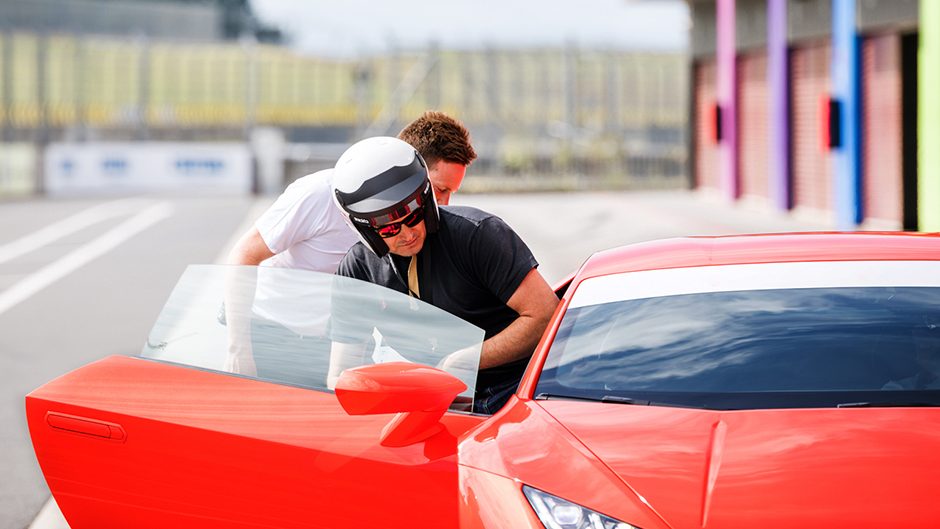
The improved V10, described by Lamborghini’s local area manager, Andrea Ruggiero, in typical Italian fashion as ‘the part we like the most’, is suitably exotic. The 5.2-litre naturally-aspirated V10 engine gains titanium intake valves and a special lightweight exhaust system. There’s probably some ECU fiddling involved too, as it gains 30hp over the old Huracan, taking the total to 640 (470 kW) at a dramatic 8000rpm while there’s 600Nm of torque at 6500rpm. Lamborghini claims a ‘dry weight’ of 1422kg, giving it a weight-to-power ratio of 2.22kg/hp. Performance claims equate to 0-100km/h in 2.9 seconds, with 200 flashing up in 9.0 seconds and it could possibly hit 325km/h. IT PRODUCES A RANGE OF SONICS AS IT RACES THROUGH ITS REV RANGE, AND THEY ARE ALL GLORIOUS. EVEN ON START UP, IT’S EPIC.
The dynamic focus is on drivability or, as Ruggiero says, ‘managing the horses’. Aiding agility is the introduction of rear-wheel steering, while targeted braking at all four wheels brings stability. These dynamic systems all have one electronic overlord in the Lamborghini Dinamica Veicolo Integrata (LDVI). This central brain controls the integration of the various systems, and they say it can anticipate what’s happening to ensure the right systems are doing the things they need to do more instantly.
The sensors and processors responsible have been updated so the LDVI knows what is happening and can coordinate the systems. These include the uprated magnetorheological dampers, the modified traction control system, the flow of the torque between the rear and front, and the torque vectoring.
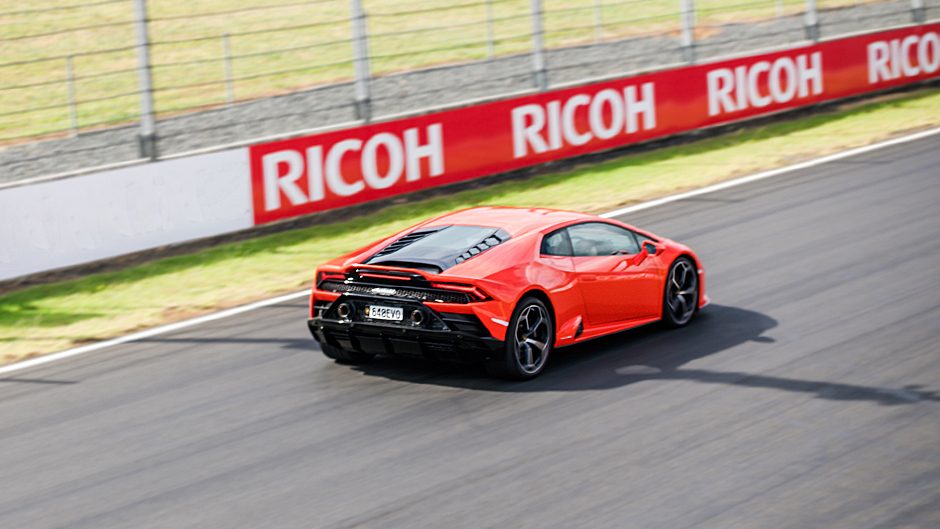
The first time you crack open that deliciously responsive throttle, the presence of the 640 horses is immediately felt, its full potential turned into forward thrust. The ‘long stroke’ 5.2-litre V10 revs like a demon, and goodness does it sound special. It produces a range of sonics as it races through its rev range, and they are all glorious. Even on start up, it’s epic. The Lamborghini Doppia Frizione processes the torque, literally snapping through the cogs in suitably dramatic fashion.
We only had a short stint with the Evo so within a few turns we had clicked the drive mode into Corsa to let the Bull run as intended. They say it’s easy to drive, while delivering the most responsive, sensory and agile driving experience in the segment. We haven’t driven them all to know if that statement is true, but it is all of those things.
Despite the power, it doesn’t feel too edgy, and with all the helpers it’s easy to drive quickly but at the same time it feels alive and ready to rage. The rear can squirm both under power and the brakes, suggesting it could easily be tempted when willing.
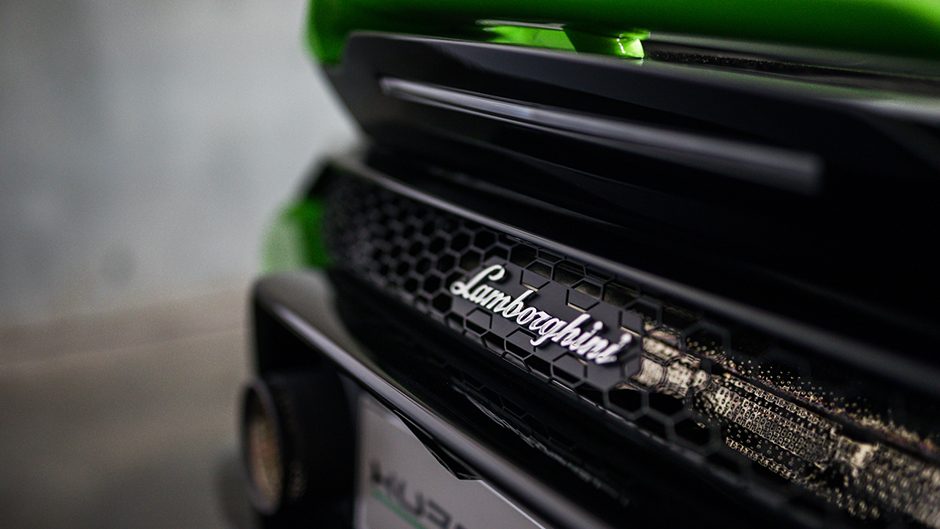
With neither quite the talent, nor the permission to switch the stability control off, it was left to Greg Murphy to show us how good the Evo can be when you know what you’re doing. He chucks it into a series of tyre smoking turns, and has it dancing to the beat of his right foot. He reckons it’s not as edgy as the Performante, which is all about lap times, locked down with all its aero and tracking the perfect line.
He likes the nature of this Evo better, being lively and chuckable but also easily controlled. He raves about how adjustable it is on the throttle. He reckons it’s so pliable that most drivers would be able to start throwing it around, given how responsive, agile and adjustable it is.
We also drive the old Huracan for a comparison, and indeed the Evo is better in all areas as intended; it’s more responsive, punchier, and stable, but it’s on the turn that we noticed the biggest improvements. The Evo changes direction in wizard-like fashion thanks to new dynamic steering with a super quick ratio and the introduction of rear- wheel steering. The latter is designed to quicken turn-in at slower speeds and improve stability in the sweepers. That stability sure is noticeable but it just turns with less effort and more speed.
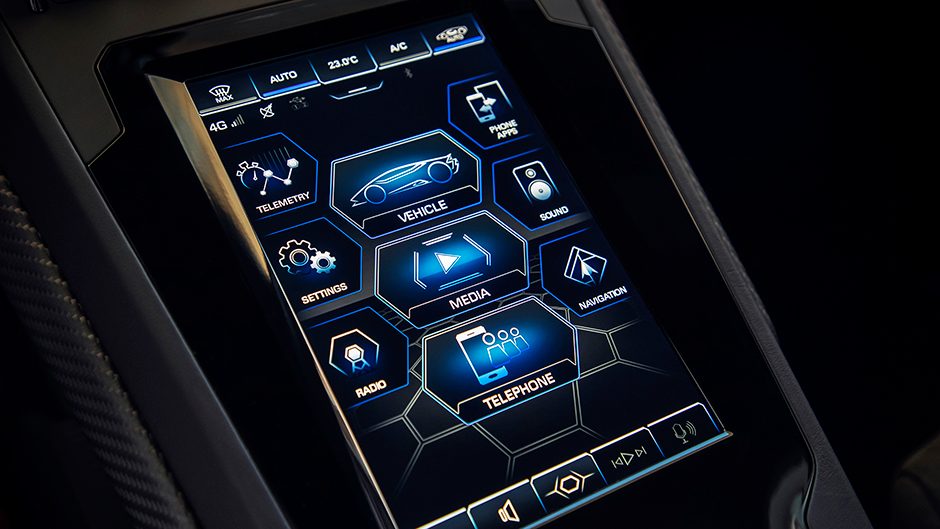
Lamborghini likes to say it is big on driving emotion, and we say on that, they always deliver. There are few road cars you drive and emerge from the cockpit after a short stint with your heart rate right up and the adrenals still pumping. This is fast, visceral and alive with character.
You can spot the Evo by its new front and rear ends, and side air intakes. The front gains more wings and splitters, while the rear is all exhaustive aggression with twin pipes exiting out high above the bumper while a slotted spoiler tops it off. With an optimised undertray, they say the enhancements make this six times more efficient in terms of cutting through the air than the original Huracan while it produces seven times the downforce. The Performante still has superior aeros however, especially when it comes to downforce.
One new addition we didn’t get time to fiddle with was the infotainment screen. This 8.4-inch display is orientated portrait style on the console. It’s now in charge of most interior functions as well as connectivity duties, and has all the cool displays showing the flow of torque to each wheel and how much steering work the rear wheels are doing. But given how fast the Huracan Evo does things, you’ve no time to even glance at them when behind the wheel.
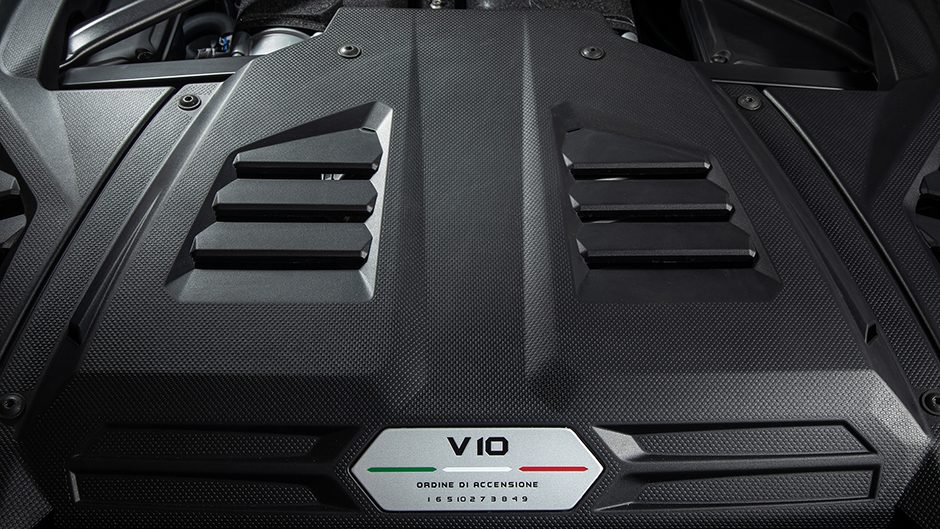
With the new Huracan Evo, the entry point for Lamborghini has risen to $420,000, with the Spyder at $465,000. And of course that’s prior to the spend up on options. Some are fairly pricey, like pearl effect paint at $20,910 while matte finishes command $24,650. You can spend close to $10,000 on forged rims, thousands more on special trims for the interior, or maybe $10,800 on racing seats.
And why not go an extra $2470 for coloured seat belts. It makes the $6110 three-year maintenance package seem pretty cheap. Extending your warranty for a fourth year costs $6700 and $13,000 for a fifth year, suggesting things start to go awry by then.
But you’ll have been tempted to trade up in that time, and if this upgrade is anything to go by, the next one should be epic.


